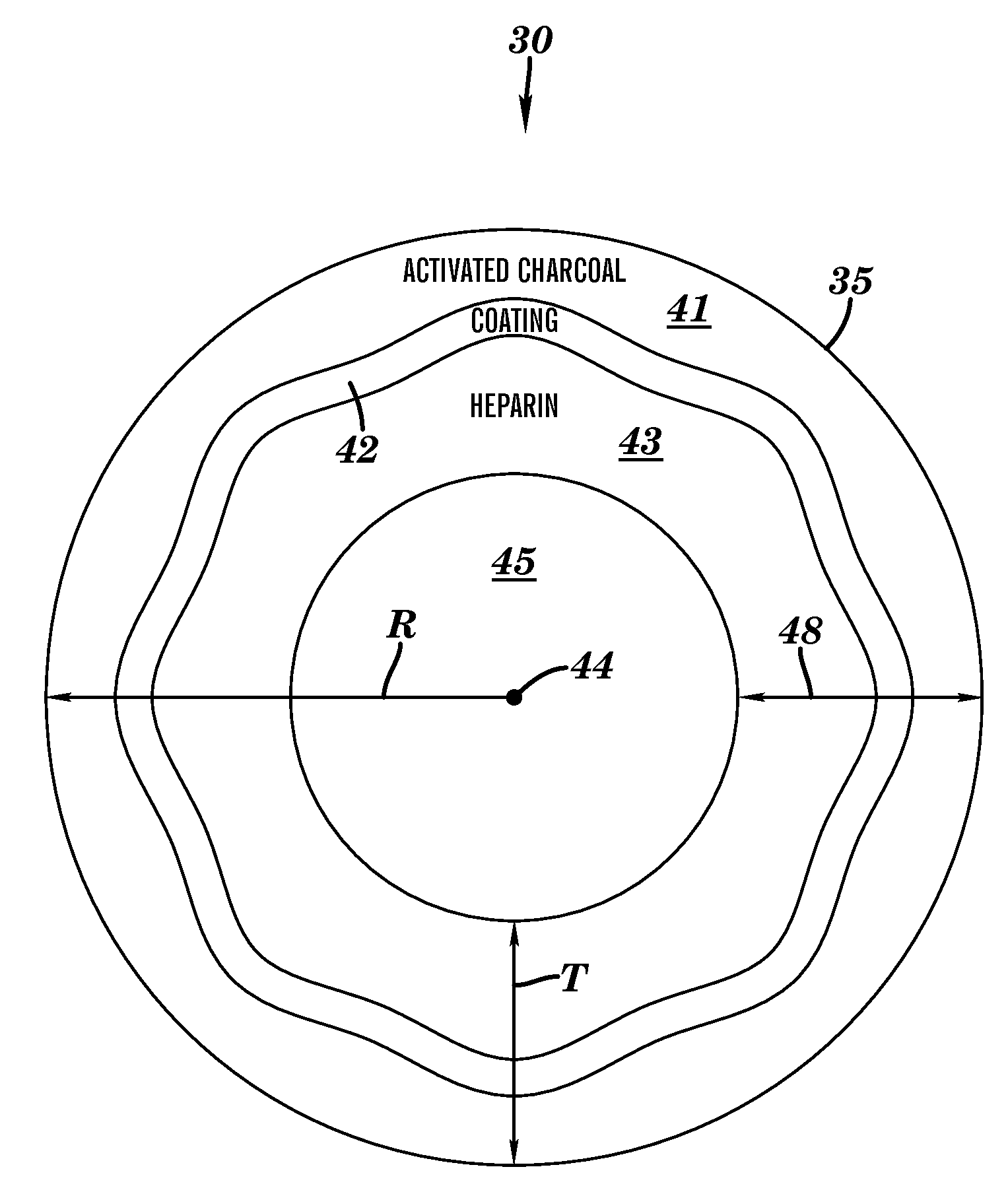Novel filter composites for drug detoxification
- Summary
- Abstract
- Description
- Claims
- Application Information
AI Technical Summary
Benefits of technology
Problems solved by technology
Method used
Image
Examples
Embodiment Construction
[0072]The present invention provides filters with nanocomposites for the maximum removal chemotherapy such as oxaliplatin and other chemicals from blood while minimizing filter impact on blood chemistry. Initial clinical results from studies treating cancer in the liver using the filter of the present invention confirm that more drug is delivered to the tumor site, and less to the other regions of the body, which enhances tumor shrinkage with improved quality of life over systemic cancer therapies.
[0073]The inventive filter has a higher first pass extraction and is blood compatible. The inventive filter comprises a coating, such as a heparinized-methyl methacrylate coating, a heparinized-cellulose coating, and other ocating, to increase first pass extraction while maintaining an environment compatible with whole blood. Novel coating strategies, which are utilized to improve the drug removal efficiency and blood compatibility, include: 1) spray coating; 2) presoaking the charcoal bea...
PUM
| Property | Measurement | Unit |
|---|---|---|
| Structure | aaaaa | aaaaa |
| Biological properties | aaaaa | aaaaa |
Abstract
Description
Claims
Application Information
 Login to View More
Login to View More - Generate Ideas
- Intellectual Property
- Life Sciences
- Materials
- Tech Scout
- Unparalleled Data Quality
- Higher Quality Content
- 60% Fewer Hallucinations
Browse by: Latest US Patents, China's latest patents, Technical Efficacy Thesaurus, Application Domain, Technology Topic, Popular Technical Reports.
© 2025 PatSnap. All rights reserved.Legal|Privacy policy|Modern Slavery Act Transparency Statement|Sitemap|About US| Contact US: help@patsnap.com



